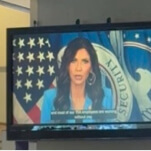Thanks to Sandy, NYC Animal Shelters May Be Reducing Their Euthanasia Rates
LatestI, like many East Coasters, lost power last week for five days. When I made my way from my Manhattan home to a friend’s in Brooklyn, I was able to check my email. My inbox was replete with people asking me what they could do to help animals affected by super storm Sandy in NYC and the surrounding areas.
There were definitely losses in the last week. Pets up and down the coast were separated from their owners. But, thanks to the fact that the city welcomed pets into its shelters, I don’t think as many New York City animals suffered during this crisis as people might think. Hearts should probably be bleeding less for the furry things, and more for the reptiles who went without heat lamps and the fish whose tanks forwent aeration. But folks weren’t asking me about how to help the pet bearded dragons and guppies. They wanted to know what to do for the cats and dogs.
I made what suggestions I could. I directed people to check in with Best Friends Animal Society, the large Utah-based rescue and advocacy organization, which is collecting supplies for pets this week in Manhattan at 80 East 11th Street, Suite 301A, and at 560 West 43rd Street. (For more precise information contact volunteer coordinator Tammy Heeber at (917) 733-3076). I told people about Bobbi And The Strays, the wonderful Freeport, Long Island, shelter that was severely hit. They’re currently taking donations and are welcoming handy volunteers who can help replace the sheet rock and rebuild the copious kennels that were ruined by flooding and mold. They can be reached at (516) 378-4340.
Then I suggested that they call their closest shelter and inquire about pets that might be in need of a foster home — providing a temporary shelter for an animal that might otherwise be put down for lack of space in a shelter. But this last bit of advice was only masquerading as a timely suggestion. Really, I’d advise people do this any day of the year.
In talking about the storm this weekend, Mayor Bloomberg pointed out that it’s possible to laugh, cry and grieve all at once. Honestly, that’s how I generally feel about pets in New York City. Some of them make me laugh endlessly — I’m a professional dog trainer, and pretty much every dog I spend time with can elicit a giggle form me. I don’t just laugh with pets, however: I laugh at them, too: in a city of dog costume parades, pet booties and puppy-only swimming pools, you have to have a sense of humor. I don’t worry too much for so many of the pets I meet. For better or worse, they’re often treated like beloved, ersatz children. I wasn’t worried about how they’d make it through the storm and the blackout. The black week meant that many pets I know only got to spend more time with their owners. And, heck, some of them could probably have benefited from short fast.
But I do feel grief whenever I think of all the adoptable animals who are euthanized using city money every day. And I can’t say I shed more tears for them last week than any other week. If anything, I shed fewer tears. Yesterday was the first time in years that New York City euthanized zero dogs.
At least, this is the report from Karen Pepp, the founder of the Facebook group Urgent Part 2. For nearly two and a half years, she has been posting the “at risk” list, aka the euthanasia list, that is dispatched nightly by the Manhattan branch of New York’s Animal Care & Control, the city’s Department of Health’ underfunded shelter system. When the Animal Care & Control lost power, they stopped sending out the list for several days. Last week, Pepp posted to the group, which has 53,000+ followers, that she feared the shelter’s lack of power and the absence of a euthanasia list meant that animals were being put down at “an alarming rate.” But her fears were allayed by volunteers, who corrected her: “Yesterday, no animals were euthanized at the Manhattan ACC,” she told me when we spoke after both of our power had come back on. “As far as I know, that’s unprecedented.”
I called contacted AC&C to verify this and to find out what happened — they get a lot of bad press, but this seemed like a moment they could boast. But they didn’t get back to me. So what’s the reason for no list? Pepp said she thinks it’s because, in the face of a crisis, there were simply more hands on deck. The normally understaffed facilities last week welcomed back “volunteers who hadn’t been there for months. People are wanting to take in fosters. When there’s a tragedy, everyone wants to help. If we can do this during the tragedy, we should be able to do this the rest of the time. But these are the moments when everyone stands up.”
This is why, as an animal advocate, I am feeling a little bit of the mixed emotions that must’ve been experienced by workers at post-9/11 blood banks. Their facilities overflowed with recruits after 9/11. In the end, there was no greater need for blood after than there was before 9/11. But we all wanted to do the right thing. I stood in line with a raised sleeve at Manhattan’s now-shuttered Cabrini hospital the afternoon of the towers’ collapse, watching the staff bustle around to try and control the zigzagging line going into the normally vacant donation room. As they dusted off previously unused boxes of crackers, I remember seeing a hint of a smile on the bank’s directors’ faces. It would’ve been churlish, but I’m guessing they would’ve liked to high five.
-

-

-

-

-

-

-

-

-

-

-

-

-

-

-

-

-

-

-

-

-

-

-

-

-

-

-

-

-

-

-

-

-

-

-

-

-

-

-

-








































